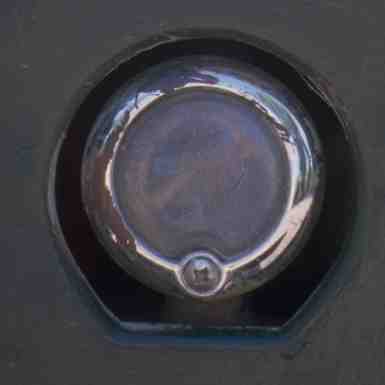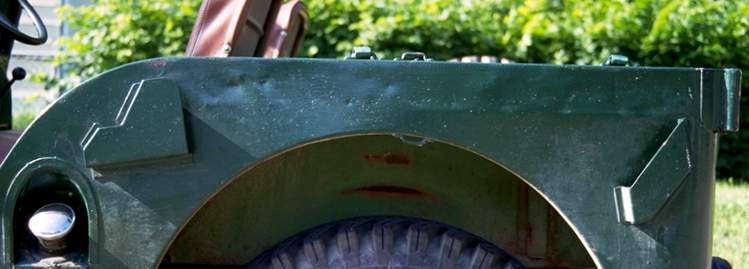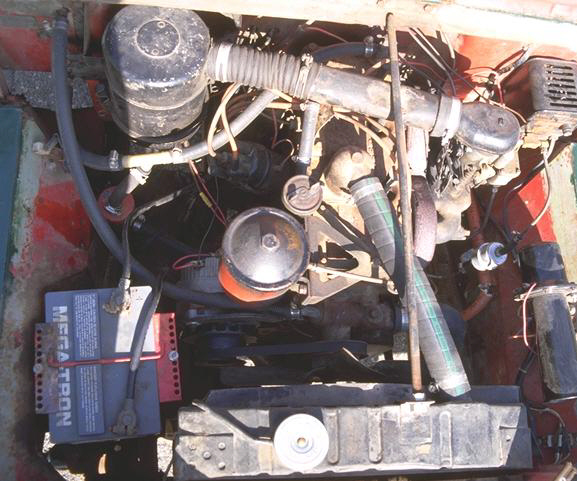

The ammeter and fuel gauge shown are modern replacements. The ones on early Jeeps were not reliable and were insufficiently damped – that is, the needle would jump around on bumpy roads making it hard to read (a major problem on a vehcile that is driven primarily on bumpy roads). The other instruments are original.

This Jeep has the original tailgate and hood with the Willys logo in raised letters. The raised letters were painted the same color as the surrounding area when these vehicles left the factory. Reproduction tailgates and hoods do not have the raised letters (presumably to avoid trademark disputes) and so people who own them often paint the logo in place.
Some people purchase the logo pieces cut out from a scrap body and have them welded into a reproduction one.

This rare, original grille screen was a dealer option when the Jeep was new.

The early style parking lights are based on the blackout lights used on the MB, but with a different lens assembly. They were used through the first couple months of production in 1947.

These built-in sheet metal brackets are to hold the wooden top bows when not in use. They are unique to the CJ-2a and are not found on later Jeeps. The footman loops are for a strap that holds the bows in the brackets.

The engine compartment on my Jeep.

Family resemblance? Well, they have changed a little bit over the last half century. On the right, a friend's 1995 Jeep Wrangler for comparison.
[1947 Willys CJ-2a] | [More Photos] | [Modifications] | [Repairs] | [Towing & Trailering] | [Early Jeep Resources]
Copyright � 1997 by Steven Dunlop. Used with permission. Inquiries